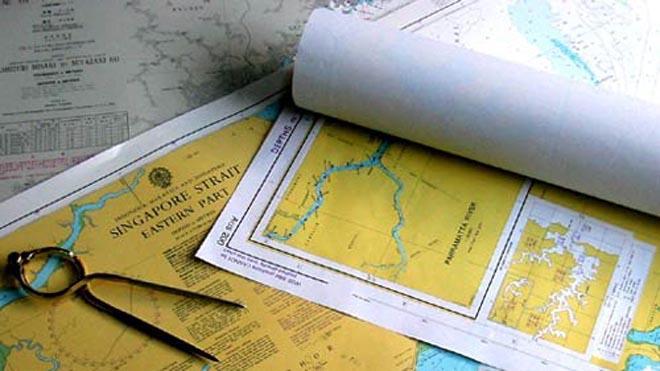Know your charts and sail clear of deadly rocks and reefs!
by John Jamieson on 6 Nov 2014

It pays to be so familiar that recognising the meaning is second nature. SW
How can you tell which rocks or reefs will cover or uncover with the tide each day? It pays to be very familiar with the symbols on nautical or electronic charts. For instance, what do the symbols that look like 'plus-signs' or 'asterisks' mean? Read this excerpt from John Jamieson's newest eBook 'Chart Symbols Made Easy' to find out more.
1. Look for 'Plus-Signs' Beneath the Waves
Scan your chart for plus signs or plus signs surrounded by a circle of dots. This indicates a dangerous underwater (submerged) rock. These rocks are never visible, even at the lowest tides. They may or may not show depths alongside the rock. Set your course well clear of the dangerous 'plus-sign' rocks.
2. Sail Clear of 'Dots-in-Four-Corners' Rocks
Beware of four distinct dots in all four corners of the plus sign symbol. These rocks are awash--which means they lie just at or below the surface of the water--at low tide. You may or may not see these rocks break the surface at low tide. That can depend on the charted sounding datum.
On NOAA charts that show a datum of mean lower low water (MLLW), rocks awash may be visible at some low tides. On charts for other countries, soundings are often given at a much more conservative datum called Lowest Astronomical Tide (LAT). Rocks awash on these charts will most often never be visible. Highlight dangers like these to avoid catastrophic damage to your small sailboat!
3. Avoid Contact with Deadly 'Asterisk' Rocks
Look for common asterisk symbols or asterisks surrounded by dots on your nautical chart or plotter. These rocks poke their deadly heads out of the water at low tide, but cover up at high tide. That's just one more reason to know the stage of the tide whenever you enter a harbor, anchor your boat, or make landfall along a coastline.
Scan and highlight dangers like these on your nautical or electronic chart. Keep your sailing crew or partner and sailing boat safe on the waters of the world throughout the sailing season. Use sailing tips like these for safer sailing--wherever in the world you choose to cruise!
Captain John Jamieson (Captain John) shows you the no-nonsense cruising skills you need for safer sailing worldwide. Visit his website at Skipper Tips. Sign up for the Free, highly popular weekly 'Captain John's Sailing Tip-of-the-Week'. Discover how you can gain instant access to hundreds of sailing articles, sailing skills videos, sailing tips newsletters and Free sailing topic e-Books!
If you want to link to this article then please use this URL: www.sail-world.com/128650

